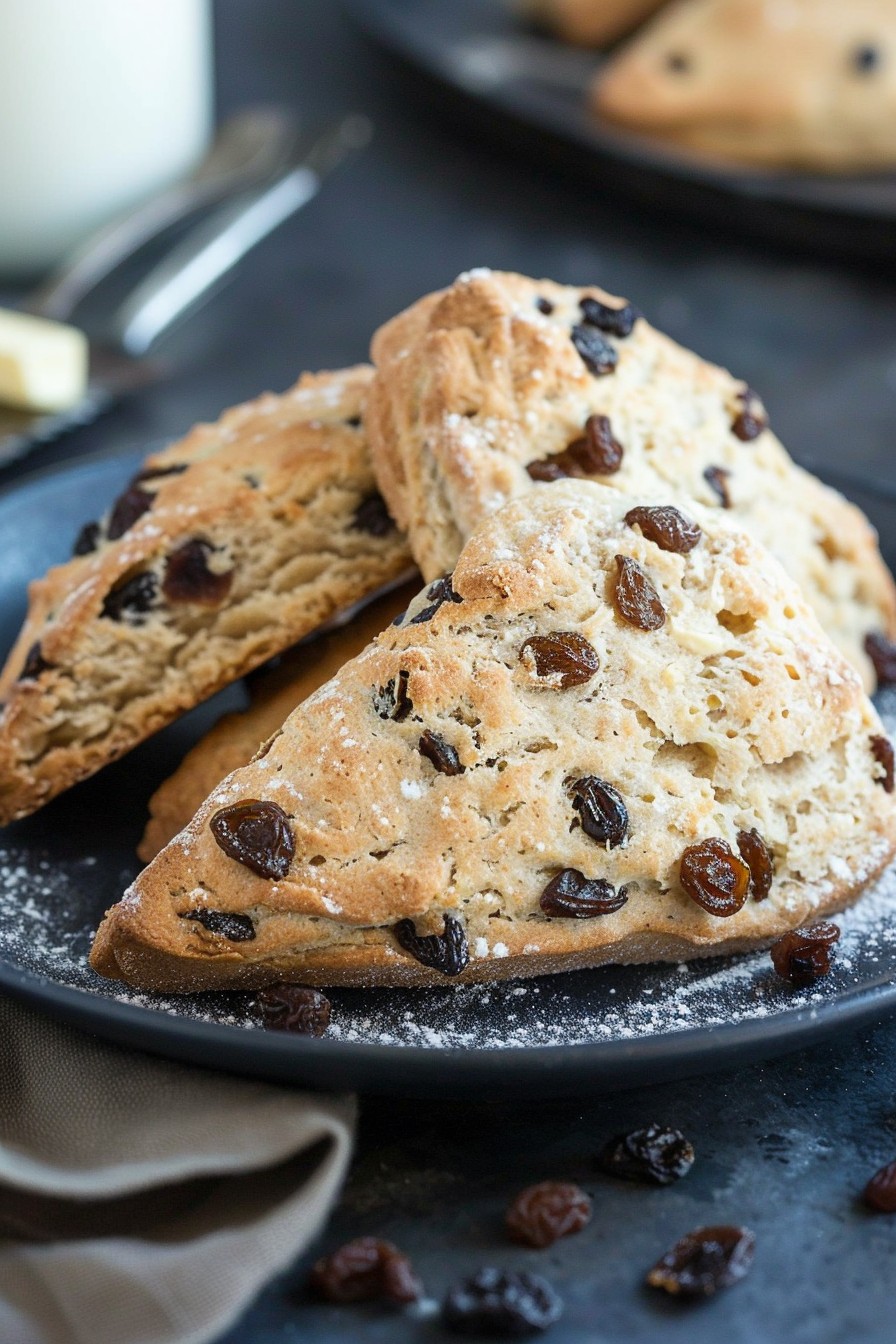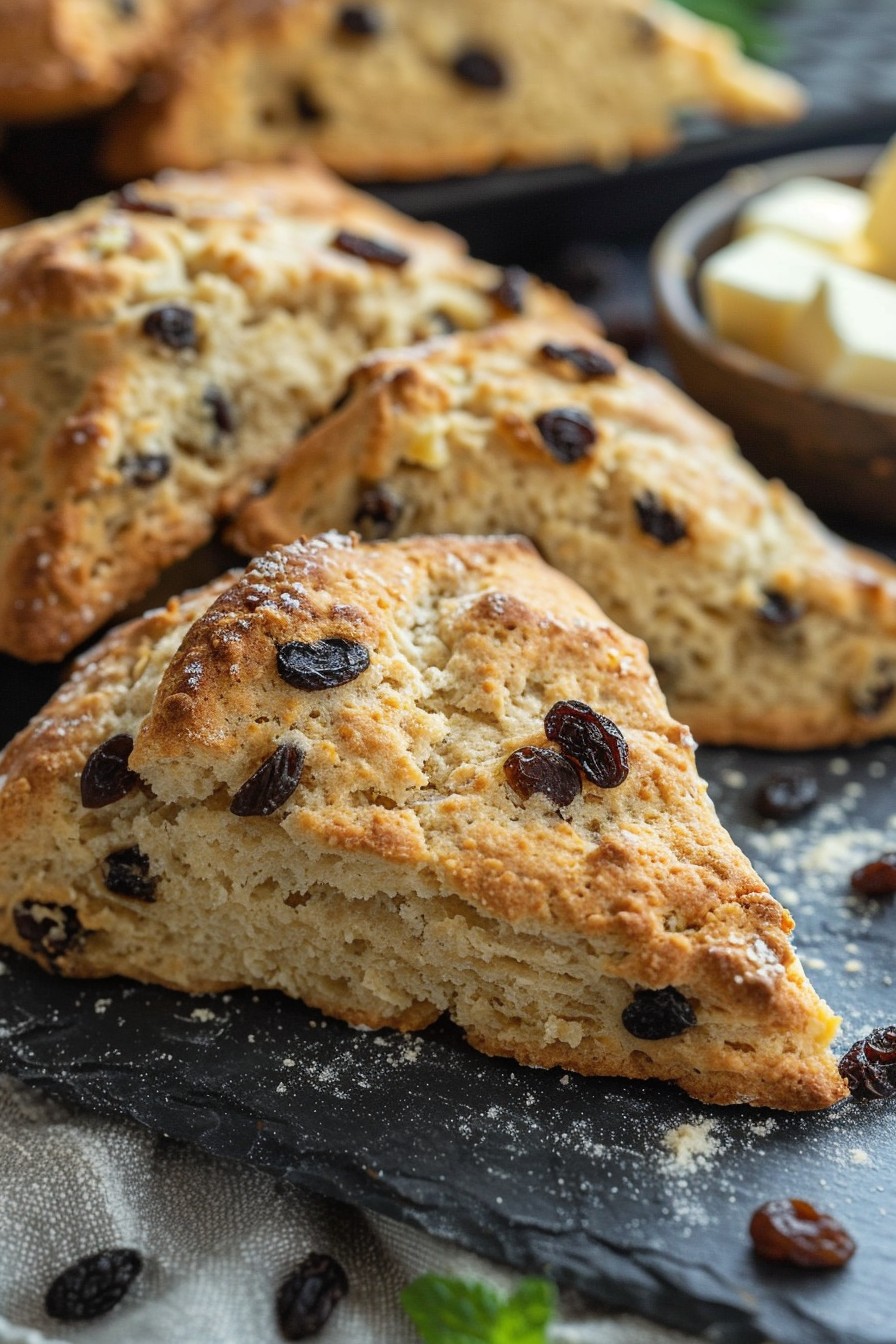Craving something hearty, quick, and delicious? This Irish soda bread scone recipe is your answer. Combining the rustic charm of traditional Irish soda bread with the tender, buttery texture of scones, this recipe is a game-changer for breakfast or tea time.
Why This Recipe Works
- No yeast needed! The baking soda and buttermilk reaction gives these scones their perfect rise.
- Quick to prepare, making it ideal for last-minute baking sessions.
- Versatile base recipe that welcomes all sorts of add-ins, from raisins to cheese.
- The crusty exterior and soft interior mimic the best parts of both soda bread and scones.
- Perfect for those who love baking but are short on time or baking experience.
Ingredients
- 3 cups all-purpose flour
- 1 tbsp granulated sugar
- 1 tsp baking soda
- 1 tsp salt
- 4 tbsp cold unsalted butter, cubed
- 1 1/4 cups buttermilk
- 1/2 cup raisins (optional)
Equipment Needed
- Large mixing bowl
- Pastry cutter or fork
- Baking sheet
- Parchment paper
- Sharp knife or bench scraper
Instructions

Preheat and Prepare
Preheat your oven to 425°F and line a baking sheet with parchment paper. This ensures your scones bake evenly and don’t stick, making cleanup a breeze.
Mix Dry Ingredients
In a large bowl, whisk together the flour, sugar, baking soda, and salt. The key here is to ensure the baking soda is evenly distributed for a uniform rise.
Cut in the Butter
Add the cold, cubed butter to the dry ingredients. Using a pastry cutter or fork, work the butter into the flour until the mixture resembles coarse crumbs. This step is crucial for achieving that flaky scone texture.
Add Buttermilk and Mix
Pour in the buttermilk and stir until just combined. If you’re adding raisins or any other mix-ins, now’s the time. Overmixing leads to tough scones, so stop as soon as the dough comes together.
Shape and Bake
Turn the dough onto a floured surface, shape into a round about 1-inch thick, and cut into 8 wedges. Place on the prepared baking sheet and bake for 15-20 minutes, or until golden brown. Let cool slightly before serving.
Tips and Tricks
For the flakiest scones, keep all your ingredients as cold as possible before baking. If the butter starts to melt before it hits the oven, your scones won’t be as tender. Another pro tip: brush the tops with a little buttermilk before baking for an extra golden crust. And if you don’t have buttermilk on hand, you can make a quick substitute by adding 1 tablespoon of lemon juice or vinegar to a cup of milk and letting it sit for 5 minutes.
Recipe Variations
- Cheese and Herb: Add 1/2 cup grated sharp cheddar and 2 tbsp chopped fresh herbs to the dough for a savory twist.
- Sweet and Nutty: Mix in 1/2 cup chopped nuts and 1/4 cup honey for a sweeter version.
- Fruit Lover’s: Swap raisins for dried cranberries or chopped dried apricots for a different fruity flavor.
- Whole Wheat: Substitute half the all-purpose flour with whole wheat flour for a healthier option.
- Gluten-Free: Use a gluten-free flour blend in place of all-purpose flour for those with dietary restrictions.
Frequently Asked Questions
Can I make these scones ahead of time?
Absolutely! You can prepare the dough, shape it, and then freeze the unbaked scones. When you’re ready to bake, just pop them in the oven straight from the freezer, adding a few extra minutes to the baking time.
Why did my scones turn out dense?
Dense scones are usually the result of overmixing the dough or using warm ingredients. Remember, the less you handle the dough, the lighter your scones will be.
Can I use something instead of buttermilk?
Yes, as mentioned in the tips, you can make a buttermilk substitute with milk and lemon juice or vinegar. Alternatively, plain yogurt thinned with a little milk works well too.
Summary
This Irish soda bread scone recipe is a delightful twist on two classics, offering the best of both worlds. Quick, easy, and adaptable, it’s perfect for any occasion, from a cozy breakfast to a festive St. Patrick’s Day celebration.
